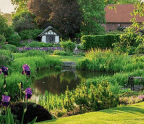

Seemingly dirty, often cold, usually heavy to move around: it’s tempting to dismiss garden soil and focus instead on the more obvious and more visually appealing life forms growing above it. Yet soil is the point at which all gardening begins, and without good, healthy soil, all efforts made above ground are likely to be more challenging and far less successful – possibly even futile.
Long established is the influence of soil type on gardens. If you’re new to a garden, the first thing you should do is determine whether, for example, it’s set on clay and will need lightening with compost and manure, or on greensand, which needs little amendment. Acidity is key, too: ericaceous plants like rhododendrons and azaleas simply will not thrive in soil that isn’t a little acidic.






